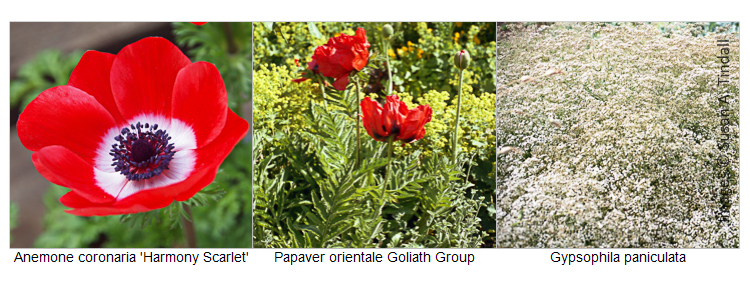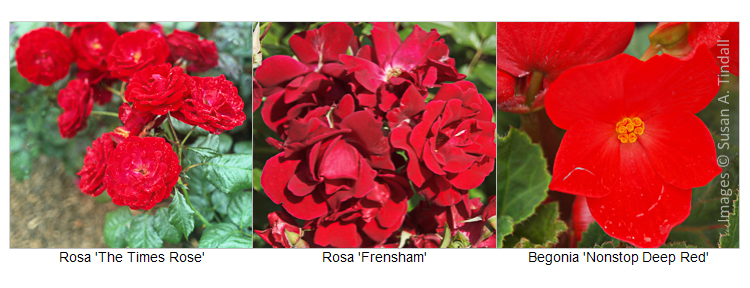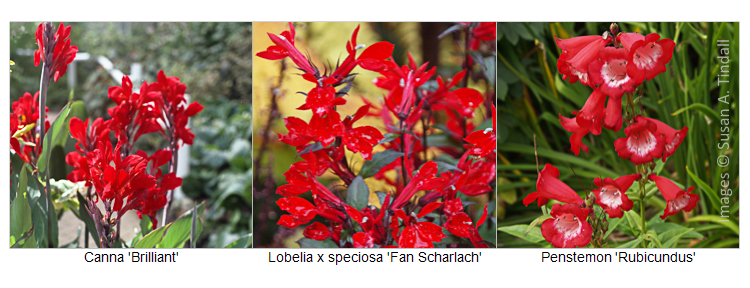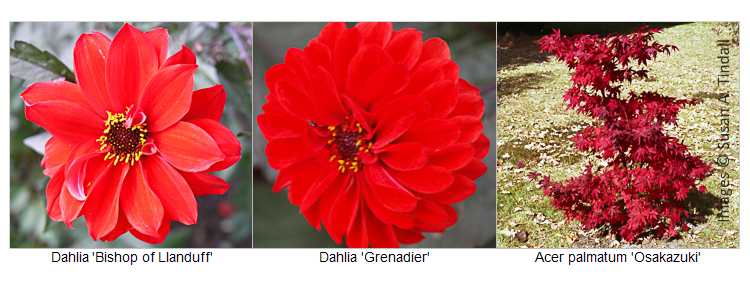Deep clear red flowers have a distinction and quality all their own. There are surprisingly few flowers that have an unadulterated red hue. Red shades vary from the delectable purple and plum hues to the ‘in your face’ vermilion hues that have a touch of yellow in their make-up. The clear reds are best in a simple setting rather than in a crowd that babbles with colour. Green foliage complements red and assists the strong statement that rich red makes. You don’t want too many flowers of this colour at the same time. An excess of prima-donnas can destroy the party! The shade of red takes centre-stage with glorious flowers, often for a short time. Plan for a succession of these reds to provide intense colour hits for the different seasons.
In March the small anemone coronaria forms provide fresh clear colours in blue, white and mauve as well as a scarlet of, for example, Anemone coronaria De Caen Group ‘ Harmony Scarlet’ (Harmony Series) . Grow a container filled with this plant to maximise impact or plant a patch in your garden, perhaps in the spot where the dramatic oriental poppy will later flourish.
The oriental poppies are in flower during late May and June. Papaver orientale Goliath Group is perhaps the ultimate red statement. The huge scarlet flowers with papery petals, a bold black heart and black basal blotch can dominate any garden with their assertive floral beauty. They take up a fair amount of space and, after flowering collapse gracelessly. The classic trick used by clever gardeners is to plant Gypsophila paniculata behind it so that its foam of white flowers covers the declining poppy foliage.
To continue the theme through summer there are some stunning roses such as the double flowers of Rosa The Times Rose = ‘Korpeahn’ or the single blooms of Rosa ‘Frensham’ both of which repeat flower well. On the patio, a container or two of begonias such as one of the non-stop series, specifically Begonia (Nonstop Series) ‘Nonstop Deep Red’ with its lush green foliage.
Later in the summer there can be high drama with an exotic Canna such as Canna ‘Brilliant’ or the glow from a group of herbaceous plants such as the columnar flowers of late summer lobelia. For example Lobelia x speciosa (Fan Series) ‘Fan Scharlach or the bold trumpets of white-throated Penstemon ‘Rubicundus’.
Certain dahlias can provide exceptional interest with their combination of near-black foliage and red flowers; grown in a group they provide a powerfully coloured feature. There is a single flowered favourite called Dahlia ‘Bishop of Llandaff’ or the double flowers of Dahlia ‘Grenadier. These will provide interest in late summer and autumn. Dahlias are often treated as annuals, but the tubers can be dug up and kept in a frost-free environment over winter, and replanted the following year.
Finally, end the season with the biggest colour hit of all with the autumn foliage of Acer palmatum ‘Osakazuki’. Ravishing in autumn and needing a warm sheltered spot, it will earn its keep all year through with its elegant framework and beautiful foliage.
Enjoy!
Susan A. Tindall




